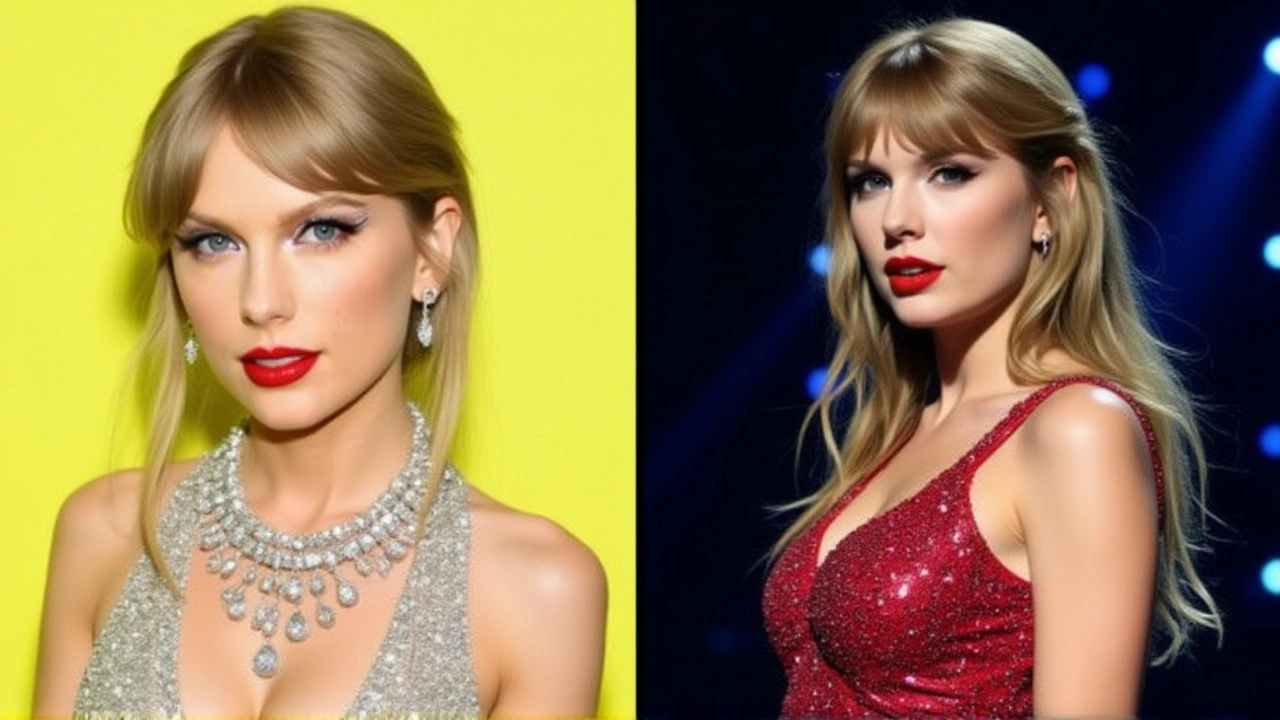When Taylor Swift dropped the tenth track of her eleventh studio effort, the world stopped to listen. “Who’s Afraid of Little Old Me?” arrived on as part of The Tortured Poets Department, a record Swift describes as her “lifeline” after years of public scrutiny.
The song’s Southern‑gothic chamber pop vibe, layered with echo‑drenched strings, feels like stepping into a haunted circus tent. Co‑produced with longtime collaborator Jack Antonoff, the track blends airy melancholy with razor‑sharp lyricism, positioning Swift as both a witch and a trapped animal in a world that raised her like a carnival spectacle.
From “Midnights” to “Tortured Poets”: The Album’s Backstory
After the surprise release of her tenth album Midnights in 2022 under Republic Records, Swift quietly retreated to write what would become her most personal project yet. According to interviews, she began drafting songs for The Tortured Poets Department while the 2023 leg of her Eras TourUnited States was in full swing.
Swift kept the sessions under wraps, using tour downtime to record in makeshift studios across the country. The result: an album that feels like a diary entry, raw and unfiltered, with “Who’s Afraid of Little Old Me?” serving as a centerpiece that confronts her own legend.
Lyrical Dissection: Witchcraft, Circus, and Self‑Defense
Fans and critics have spent weeks decoding the track’s metaphors. The opening verse hints at a teenage girl thrust into a spotlight that feels more like an “asylum” than a stage. Swift sings, “I was tame, I was gentle ’til the circus life made me mean,” a line that simultaneously nods to her early pop innocence and the ruthless machinery that later surrounded her.
She then likens herself to a wicked witch, hissing at critics with “If you wanted me dead, you should’ve just said / Nothing makes me feel more alive.” The witch imagery isn’t just theatrical; it’s a reclamation of power. By embracing the role of the feared sorceress, Swift flips the script on media narratives that have long tried to pigeonhole her as a victim.
The chorus—“Who’s afraid of little old me? / You should be”—takes a familiar English idiom that usually signals modesty and turns it into a challenge. It’s a line that feels like a middle‑finger to anyone who ever tried to diminish her influence.
Chart Performance and Global Reach
Commercially, the song didn’t just whisper—it roared. It debuted at number nine on the Billboard Global 200, marking Swift’s 28th top‑ten entry on the chart. The track also cracked the top ten in Australia, Canada, New Zealand, and the United States, and earned certifications in Brazil, New Zealand, and the United Kingdom within weeks of release.
Streaming numbers tell a similar story. In its first 48 hours, the song accumulated over 32 million streams on major platforms, while YouTube views for the official lyric video topped 5 million by the end of the first week.
Critical Reception: Love‑It-or‑Leave‑It?
Reviews are split—just the way Swift seems to like it. Some critics, like Pitchfork, called the track “a dense, unsettling listen that rewards patience with its lyrical depth,” praising Antonoff’s production for its “creepy, echo‑filled corridors.” Others, such as The Guardian, felt the song “treads on familiar ground, its heavy-handed witchcraft metaphor bordering on self‑indulgent.”
What’s unanimous, however, is acknowledgement of the song’s emotional stakes. Musicologist Dr. Lena Hsu of Berklee College notes, “Swift uses the chamber pop format to create a claustrophobic soundscape, mirroring the psychological ‘asylum’ she describes. It’s both a personal confession and a public statement.”
Live Renditions on the Eras Tour
When Swift took the stage during her 2024 Eras Tour stops—starting in Tokyo on March 5 and rolling through Europe by May—she performed the track with a theatrical set: a dimly lit circus tent backdrop, swirling mist, and a brass section that punctuated each lyrical jab. Audiences reacted with a mixture of awe and “sing‑along” energy, flooding social media with screenshots of the moment she leapt from a mock gallows to “levitate down the street.”
In a post‑show interview in London, Swift said, “I wanted to give fans a space where they could see the rawness, the fear, but also the defiance. It’s a song about owning the parts of yourself that the world tries to cage.”
Why It Matters: Reputation, Resilience, and the Future of Pop
Beyond the catchy chorus, the song acts as a cultural barometer. It references two of Swift’s most contentious episodes—“Snakegate,” the 2016 feud that birthed a wave of social‑media snakes, and the “masters heist,” her 2021 battle over ownership of her back catalog. By weaving those events into a new narrative, Swift demonstrates how artists can repurpose controversy into artistic fuel.
Industry observers predict this track could influence a wave of “self‑referential” pop, where musicians openly address their own mythologies. As streaming algorithms reward engagement, songs that spark debate—like this—might become a new norm for chart‑topping hits.
What’s Next for Swift and the Album?
The Tortured Poets Department is slated for a deluxe release in November, expected to include a few unreleased demos from the “Eras Tour” backstage. Fans are also eager for a possible music video that could expand on the circus‑asylum motif. Meanwhile, Swift’s next tour leg, rumored to launch in early 2025, may incorporate more theatrical elements inspired by this very track.
One thing’s clear: Swift isn’t stepping back from the spotlight. She’s redefining it—turning every accusation into a stanza, every whisper into a roar.

Frequently Asked Questions
How does “Who’s Afraid of Little Old Me?” reflect Taylor Swift’s personal history?
The song pulls directly from Swift’s teenage rise, using circus and witch imagery to illustrate how early fame felt like a confined asylum. Lines about being “tame” versus “mean” map onto her transition from a country‑pop prodigy to a pop‑culture powerhouse.
What chart milestones did the track achieve after release?
It entered the Billboard Global 200 at #9, broke into the top ten in Australia, Canada, New Zealand and the U.S., and earned gold or higher certifications in Brazil, New Zealand, and the United Kingdom within its first month.
Which past controversies does the song allude to?
Critics see nods to “Snakegate,” the 2016 backlash over a feud with another pop star, and the 2021 “masters heist,” where Swift fought for ownership of her early recordings. Both events inform the track’s defiant tone.
How have fans responded to the live performances on the Eras Tour?
Audiences have embraced the theatrical staging—circus tents, faux gallows, and levitating choreography. Social media flooded with clips of Swift’s dramatic leaps, and many fans report the song quickly became a sing‑along favorite despite its darker vibe.
What might the song indicate about future pop trends?
Industry analysts suggest that artists may increasingly embed personal controversies into their music, creating self‑referential tracks that spark conversation and boost streaming engagement, a formula Swift seems to have mastered.
